Introduction
Art has always been a powerful form of self-expression, communication and emotional release. As artistic movements evolved over centuries, two forms have captured global attention for their emotional impact, visual freedom and limitless creativity: Expressionism and Abstract Art. While these movements may appear similar at first glance due to their rejection of realism, they are fundamentally different in purpose, technique and intention.
Expressionism seeks to reveal the artist’s inner world, presenting raw emotions and subjective experiences through exaggerated forms and intense color choices. Abstract Art moves beyond representation entirely, focusing instead on shapes, textures, color interactions and conceptual ideas that exist independently of recognizable objects.
Despite their differences, both forms continue to inspire artists and viewers today. Whether you are choosing an art style to practice, studying art history, decorating your home or exploring visual creativity, understanding the difference between Expressionism and Abstract Art can guide your journey.
This comprehensive guide breaks down each movement, their key traits, historical origins, famous artists, stylistic differences and how to choose the right form for your artistic goals. Throughout the article, you will find suggested image titles that you can use to download visuals from Envato Elements to enrich your final layout.
What Is Expressionism?

Expressionism originated in the early 20th century, primarily in Germany, as a reaction against industrialization, social conflict and traditional artistic norms. Artists rejected photographic realism and instead leaned into distortion, emotional exaggeration and bold, often unsettling visuals.
Purpose of Expressionism
Expressionism is driven by emotion. The goal is not to depict the world accurately, but to portray how it feels. Artists manipulate shape, scale, texture and color to immerse the viewer in an emotional state.
Key Characteristics of Expressionism
Intense Emotional Focus
Expressionist works often evoke fear, loneliness, anxiety or spiritual depth.
Distorted Figures
Human figures may appear stretched, twisted or disproportionate to reflect psychological tension.
Bold Color Palette
Colors are symbolic rather than realistic, often leaning toward dramatic reds, deep blues, acidic greens and harsh contrasts.
Energetic Brushwork
Brushstrokes are often visible, rough and aggressive, emphasizing movement and intensity.
Symbolic Imagery
Objects and figures take on deeper meanings connected to existential or emotional themes.
Notable Expressionist Artists
- Edvard Munch
- Egon Schiele
- Ernst Ludwig Kirchner
- Wassily Kandinsky (early works)
- Emil Nolde
Each contributed to the raw emotionalism that defines this movement.
What Is Abstract Art?

Abstract Art emerged in the early 20th century as artists began to move away from recognizable forms. Unlike Expressionism, which still relies on some representation of reality, Abstract Art detaches completely from visual accuracy.
This style emphasizes line, shape, form, color and texture as independent elements. Some artworks are intuitive and spontaneous, while others are highly structured and mathematical.
Purpose of Abstract Art
The purpose of Abstract Art is to create a visual language beyond the constraints of physical reality. It invites the viewer to interpret the artwork freely, without the boundaries of traditional representation.
Key Characteristics of Abstract Art
No Figurative Representation
Abstract Art does not attempt to depict recognizable objects or scenes.
Emphasis on Elements of Art
Patterns, symmetry, color gradients and geometric shapes become focal points.
Conceptual Depth
Abstract Art often explores mood, energy, movement, philosophy or even sound and mathematics.
Freedom of Technique
Artists may use brushes, palette knives, sponges, pours or digital tools.
Color Fields and Gestural Marks
Areas of flat color or dynamic lines often form the basis of many abstract compositions.
Notable Abstract Artists
- Wassily Kandinsky (later works)
- Piet Mondrian
- Jackson Pollock
- Mark Rothko
- Kazimir Malevich
These artists helped Abstract Art evolve into one of the most influential movements of modern art.
Historical Origins: A Side-by-Side Comparison
Here is a clear overview comparing how the two movements developed.
| Movement | Time Period | Geographical Origin | Major Influences | Main Objective |
|---|---|---|---|---|
| Expressionism | 1905–1920 | Germany, Austria | Psychology, emotional distress, industrialization | Express intense personal emotions through distortion |
| Abstract Art | 1910 onward | Russia, Netherlands, USA | Post-Impressionism, Cubism, philosophy | Break free from visual reality to explore pure form and color |
Expressionism slightly predates Abstract Art, but the two overlapped and influenced each other significantly. Expressionists paved the way for deeper experimentation, while abstract artists pushed the limits of visual interpretation even further.
How Expressionism and Abstract Art Differ
Even though both move away from realism, the differences between them are distinct and meaningful.
Focus
Expressionism focuses on the inner emotional world.
Abstract Art focuses on visual elements independent of physical reality.
Representation
Expressionism still shows objects or figures in exaggerated form.
Abstract Art often removes recognizable forms altogether.
Technique
Expressionism uses aggressive, emotional brushstrokes.
Abstract Art may use structured shapes or organic movements depending on the style.
Viewer Experience
Expressionism confronts the viewer with emotion.
Abstract Art allows personal interpretation.
Color Usage
Expressionist color is symbolic and dramatic.
Abstract Art uses color for harmony, contrast, structure or randomness.
Which Style Should You Try?
Both styles offer deep creative freedom, but the best choice depends on your goals as an artist or enthusiast.
Try Expressionism If You Want To:
- Express emotional intensity
- Explore dramatic color schemes
- Work with visible brushstrokes
- Convey personal stories or psychological depth
- Show distorted or exaggerated forms
Expressionism is ideal for artists drawn to emotional exploration and symbolic storytelling.
Try Abstract Art If You Want To:
- Experiment with shape, color and texture
- Move away from recognizable subjects
- Create visually balanced or conceptual pieces
- Work intuitively or mathematically
- Embrace modern, contemporary aesthetics
Abstract Art offers endless freedom and is especially appealing to beginners who want to explore creativity without technical barriers.
Artistic Techniques Used in Expressionism
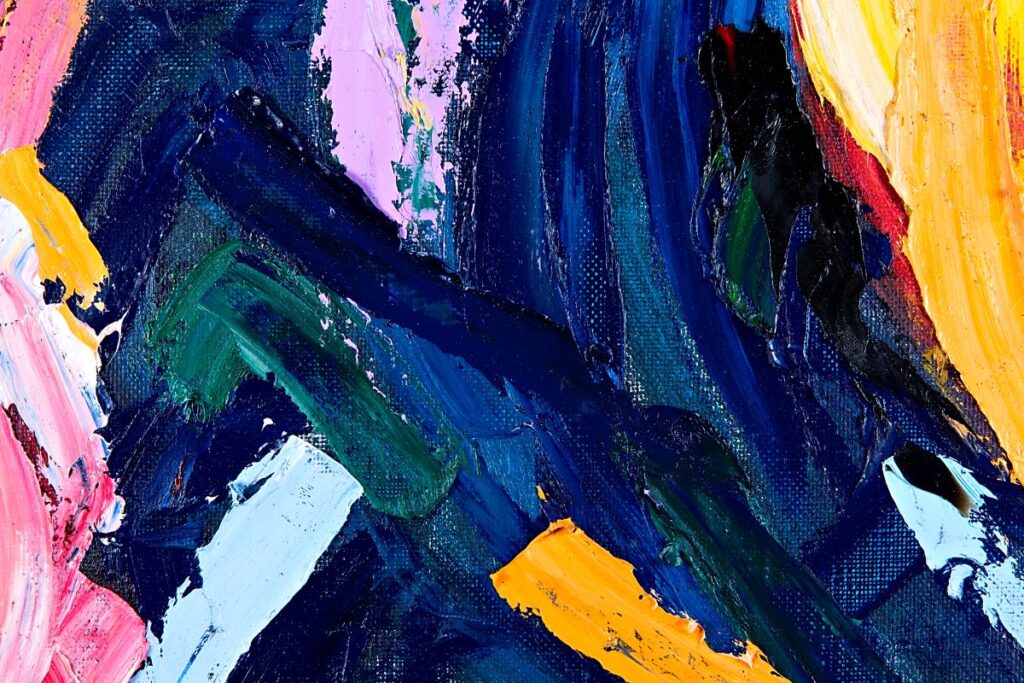
To understand Expressionism deeply, it helps to look at the techniques artists use to achieve such emotional intensity. Although every artist adapts their own interpretation, certain methods are commonly associated with this movement.
Visible and Aggressive Brushwork
Expressionist art often features brushstrokes that are impossible to hide. The strokes may be rough, uneven or heavy, creating a sense of urgency. This type of application mirrors the emotional turmoil or passion the artist wants to express.
Distortion as Symbolism
Shapes are purposely altered. A face may be elongated, a body bent unnaturally or a background warped into jagged patterns. These distortions are not mistakes; they are symbols representing fear, tension, sadness or inner conflict.
High-Contrast Color Choices
Expressionists choose colors for meaning rather than realism. A face may appear green to symbolize sickness or yellow to symbolize anxiety. Reds may express anger or intensity, while deep purples and blues often convey sorrow.
Layered Textures
Many Expressionist works use thick paint layers. The layering gives the artwork a tactile surface that captures light differently across the canvas, adding depth and emotion.
Emotional Subject Matter
Even when the subjects are recognizable, they often carry emotional weight. Themes include isolation, love, jealousy, social issues and human suffering.
Artistic Techniques Used in Abstract Art
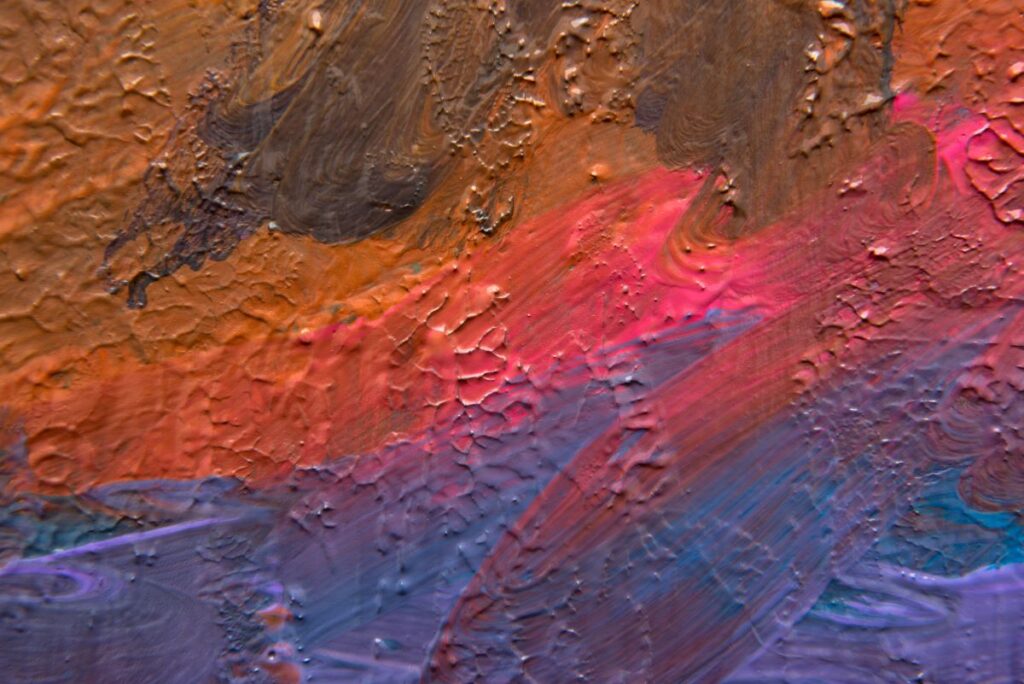
Abstract Art uses an entirely different toolbox of techniques, since it is not limited by the need to represent real-life objects or scenes.
Geometric Abstraction
Many abstract artists rely on strict geometry. Squares, triangles, grids and calculated proportions form a structured, harmonious composition. This approach is often seen in the works of Piet Mondrian or Kazimir Malevich.
Gestural Abstraction
Other artists use an expressive, spontaneous method. Instead of structured shapes, they apply paint with energy and flow. Jackson Pollock’s drip technique is one of the most iconic examples.
Color Field Painting
A significant branch of Abstract Art explores large expanses of a single color or soft gradients of color blending into each other. Mark Rothko’s paintings exemplify this style, inviting the viewer into a meditative experience.
Texture Exploration
Abstract Art embraces mixed media, layering gels, pastes, sand, paper and cloth to create intriguing textures. Many contemporary artists use palette knives instead of brushes, creating dramatic ridges and patterns.
Non-Objective Composition
The goal is not to simplify objects into shapes but to remove objects entirely. The artwork exists purely as color, texture and energy with no connection to real-world subjects.
Expressionism vs. Abstract Art: A Deeper Philosophical Divide
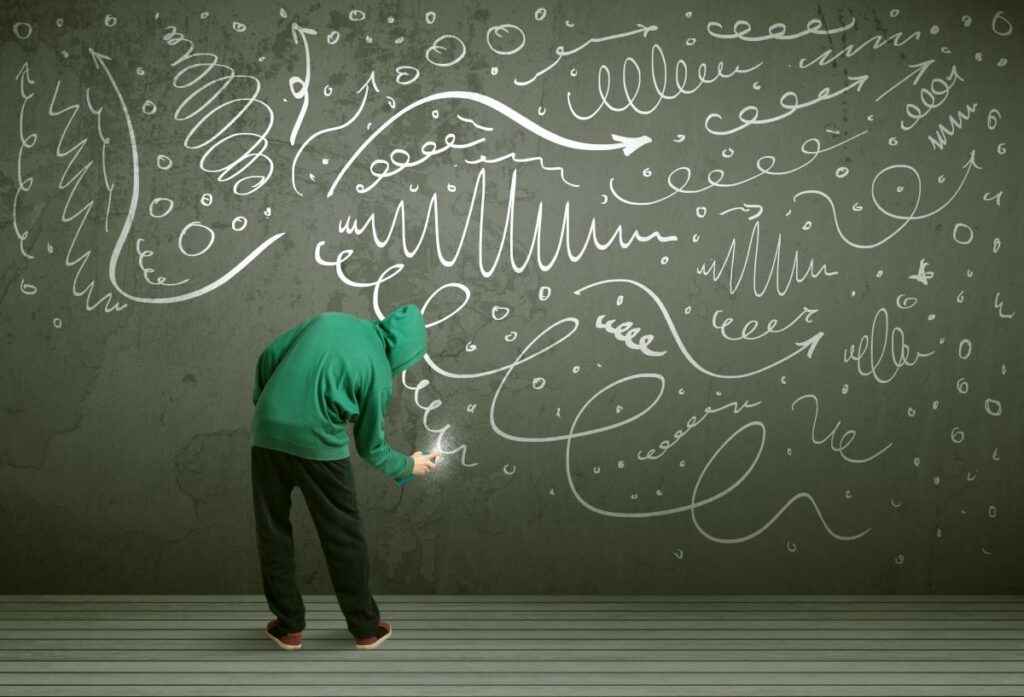
Although both styles break away from realism, their philosophical foundations are different.
Expressionism’s Philosophy
Expressionism believes that inner emotion is more truthful than external reality. Artists attempt to expose the invisible psychological world. They use distortion not to confuse, but to reveal.
The goal is emotional truth.
Abstract Art’s Philosophy
Abstract Art believes reality can be understood through color, form and visual relationships rather than literal depiction. It seeks purity in artistic elements and encourages viewers to interpret freely.
The goal is visual freedom and conceptual clarity.
Emotional vs. Intellectual
Expressionism speaks directly to human emotion.
Abstract Art engages the mind, allowing viewers to search for meaning within shapes and colors.
How These Styles Influence Modern Digital Art
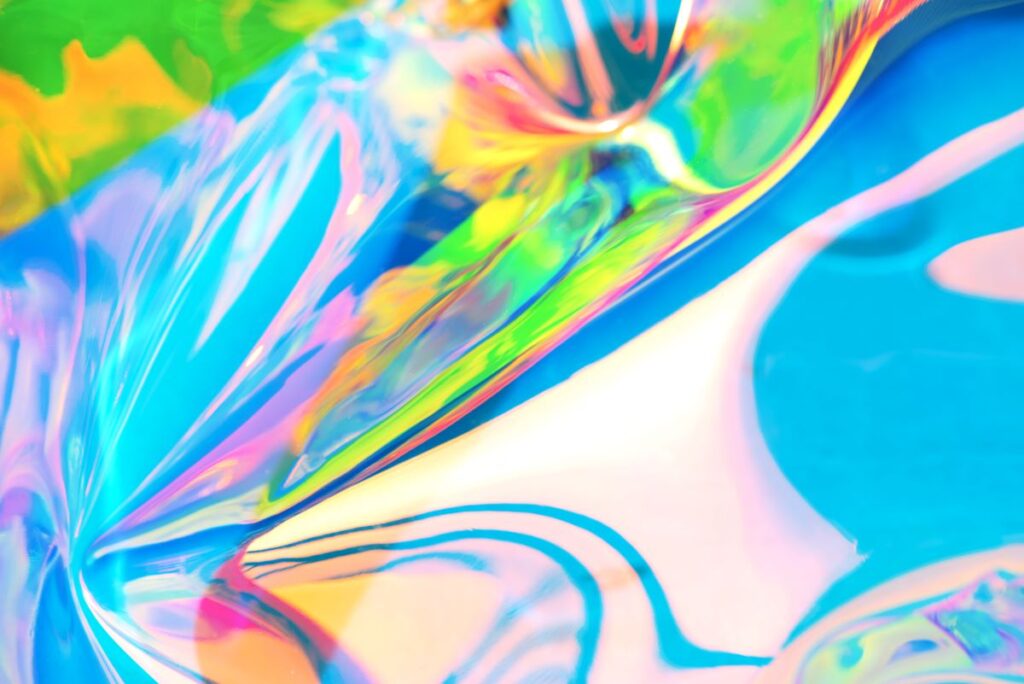
Both Expressionism and Abstract Art have made a massive impact on modern digital art, design trends, UI patterns and visual branding.
Expressionism in Digital Art
Expressionist influences appear in digital illustrations, poster designs and conceptual animations that focus on emotion or psychological storytelling. Game design and cinematic concept art often use dark or exaggerated visuals to evoke atmosphere.
Abstract Art in Digital Art
Abstract Art is even more influential in today’s world. Minimalist logos, geometric patterns, gradient-based UI backgrounds and advanced generative AI visuals often draw from the principles of Abstract Art.
Designers love Abstract Art because it fits perfectly with modern, clean aesthetics.
Which Art Style Is Easier for Beginners?
This depends on how you prefer to create.
Expressionism for Beginners
Expressionism is easier for people who enjoy storytelling, emotional expression or figurative art. If you already like drawing faces, characters or scenes but want more freedom, Expressionism is a great choice.
Abstract Art for Beginners
Abstract Art is a perfect entry point for those who want freedom without needing to draw accurately. Beginners can experiment with:
- Color combinations
- Shapes
- Textures
- Layering techniques
- Pouring or palette knife methods
This artistic movement invites playful experimentation and makes mistakes feel like part of the process.
How Expressionism and Abstract Art Work in Home Decor
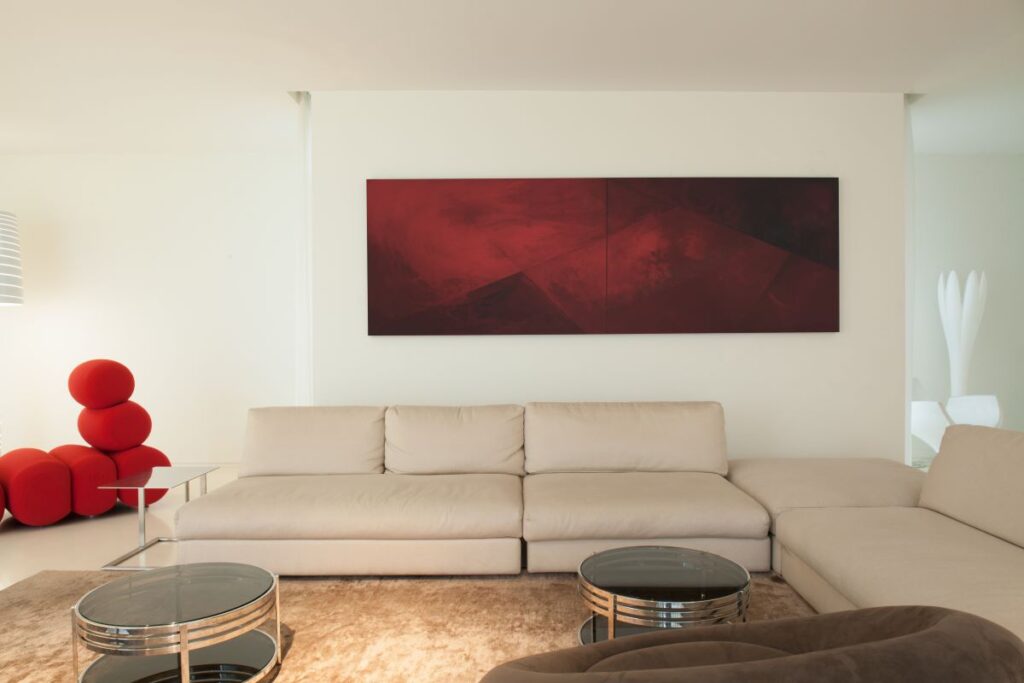
Many people choose artwork for interior design without understanding how different art styles influence ambience.
Expressionism in Home Decor
Expressionist artworks create strong emotional reactions. They are best suited for spaces where intensity and drama are desirable, such as:
- Creative studios
- Personal offices
- Art-friendly living rooms
- Gallery walls
They work well when the goal is to create conversation or convey personality.
Abstract Art in Home Decor
Abstract Art is one of the most used styles in modern decor. Its clean lines, balanced shapes and aesthetically pleasing color palettes work beautifully in:
- Minimalist living rooms
- Contemporary offices
- Hotels and commercial spaces
- Bedrooms
- Hallways
- Dining areas
Because Abstract Art is versatile and non-representational, it blends seamlessly with different interior styles from Scandinavian to Bohemian to luxury modern.
Side-by-Side Comparison Table
Below is an expanded comparison to help you understand both movements at a glance.
| Feature | Expressionism | Abstract Art |
|---|---|---|
| Focus | Emotional truth | Visual elements |
| Representation | Distorted but recognizable | Often non-representational |
| Color Purpose | Emotional symbolism | Visual harmony |
| Technique | Aggressive brushwork, distortion | Geometry, gestures, textures |
| Viewer Reaction | Emotional impact | Interpretation and curiosity |
| Common Tools | Brushes, oil paint, charcoal | Brushes, knives, digital tools, mixed media |
| Level of Freedom | Emotion-driven freedom | Total creative freedom |
| Suitable For | Artists exploring deep emotions | Artists exploring creativity and visual experimentation |
How to Decide Which Style Fits You Best
Choosing between Expressionism and Abstract Art comes down to your personality, creative goals and artistic interests.
Choose Expressionism If You:
- Want your art to carry emotional storytelling
- Enjoy using dramatic colors
- Prefer painting faces, figures or scenes
- Like conveying meaning through distortion or symbolism
- Want your artwork to feel raw or intense
Choose Abstract Art If You:
- Prefer freedom without drawing realistically
- Love experimenting with colors and textures
- Enjoy modern and contemporary styles
- Want to create decorative or conceptual pieces
- Appreciate balance, contrast and shape relationships
Step-by-Step Guide: How to Create Expressionist Art
Expressionism is emotional, dramatic and intuitive. This style allows you to paint what you feel rather than what you see. Below is a complete beginner-friendly guide to get started.
Step 1: Choose an Emotion to Express
Expressionist art begins with feeling. Pick an emotion such as fear, joy, sorrow, anxiety, hope or nostalgia. This emotional anchor will guide your color choices and brushwork.
Step 2: Select a Subject
Expressionism often uses recognizable subjects, but they are distorted to express emotion. You can choose:
- A person
- A landscape
- A city scene
- A symbolic object
Do not worry about realism. Focus on emotional intensity.
Step 3: Pick Colors That Match Your Mood
Choose colors based on their psychological impact. For example:
- Red for anger or passion
- Yellow for anxiety or tension
- Blue for sorrow or calm
- Green for sickness or unease
- Purple for mystery or depth
Expressionism relies heavily on symbolic colors, not natural ones.
Step 4: Exaggerate and Distort
Stretch or twist the shapes intentionally. You can elongate faces, tilt buildings or bend objects unnaturally. The distortion symbolizes the way emotions “bend” reality.
Step 5: Apply Bold, Visible Brushstrokes
Expressionist brushwork is raw and powerful. Use:
- Thick paint
- Rushed strokes
- Layered textures
- Palette knife marks
The more visible the strokes, the stronger the emotional impact.
Step 6: Add Symbolic Details
Include symbolic objects or marks such as spirals, jagged lines or dark shadows. These help communicate the psychological theme behind your artwork.
Step 7: Leave Imperfections
Expressionism thrives on rough edges, smudges and irregularities. Avoid over-correcting or smoothing out the painting. Let the emotion remain messy and expressive.
Step-by-Step Guide: How to Create Abstract Art

Creating Abstract Art is a free, experimental and therapeutic process. It allows you to focus on color harmony, composition and texture without worrying about realism.
Step 1: Choose Your Style within Abstract Art
There are several types of Abstract Art. Decide which direction suits you best:
- Geometric
- Color field
- Gestural
- Mixed media
- Minimalist
- Textural
You can also blend styles.
Step 2: Pick a Color Palette
Colors influence mood. Choose a palette based on your intention:
- Warm tones for energy
- Cool tones for calmness
- Neutral tones for minimalism
- Contrasting tones for visual excitement
Abstract Art relies heavily on color harmony.
Step 3: Start with a Base Layer
Apply a simple base using:
- Soft gradients
- Broad strokes
- Solid color fields
- Sponged textures
This foundational layer helps set the tone of your entire piece.
Step 4: Add Shapes, Lines or Textures
Now begin building structure. You can add geometric shapes, curved lines, overlapping forms or fragmented blocks of color. For textured styles, use:
- Palette knives
- Sponges
- Scrapers
- Dry-brush strokes
The goal is visual balance, not realism.
Step 5: Layer for Depth
Abstract Art becomes richer with layers. Apply multiple layers of paint, alternating between opaque and translucent sections. Depth gives the artwork a polished, gallery-worthy feel.
Step 6: Step Back and Evaluate Composition
Stand back and look at the artwork from a distance. Ensure the composition feels balanced, not cluttered. Adjust shapes, add new elements or soften areas as needed.
Step 7: Final Details
Add finishing touches:
- Thin lines
- Highlight strokes
- Small accent shapes
- Gloss or matte varnish
These subtle details can dramatically elevate the artwork.
Emotional Impact: Expressionism vs. Abstract Art

Understanding how each style affects the viewer will help you select the right approach for your creative goals or interior design needs.
Emotional Impact of Expressionism
Expressionism creates strong emotional reactions. Viewers often feel:
- Tension
- Empathy
- Energy
- Unease
- Passion
- Intensity
Expressionist art is ideal for personal spaces where emotion and storytelling matter.
Emotional Impact of Abstract Art
Abstract Art produces a reflective and interpretive reaction. Viewers experience:
- Calmness
- Curiosity
- Inspiration
- Mental clarity
- Creativity
Abstract Art works beautifully in modern homes, workspaces, lobbies and hotels because it feels sophisticated and open to interpretation.
How Artists Transition Between Both Styles
Many artists naturally shift between Expressionism and Abstract Art during their career. This transition happens for a few reasons:
Desire for More Emotional Freedom
Artists start with Expressionism, then move into Abstract Art when they crave more creative liberation.
Search for Personal Style
Experimenting with both styles helps artists find their unique visual voice.
Changing Life Experiences
Expressionism reflects intense emotions. Abstract Art often emerges during more peaceful or reflective phases of life.
Technical Exploration
Artists sometimes shift from detailed figures (Expressionism) to pure color and form (Abstract Art) because it allows them to explore new materials or textures.
How to Combine Expressionism and Abstract Art
You do not have to choose one style forever. Many contemporary artists blend both approaches in striking ways.
Technique 1: Abstract Background with Expressionist Figures
Create an abstract, textured background. Then add distorted Expressionist characters on top. This creates emotional storytelling within a modern aesthetic.
Technique 2: Expressionist Color Choices + Abstract Shapes
Use emotionally symbolic colors but arrange them in abstract shapes rather than recognizable forms.
Technique 3: Abstract Composition with Expressionist Brushwork
Use the freedom of Abstract Art but apply the passionate strokes typical of Expressionism.
Technique 4: Layering the Two Styles
Start with a structured abstract composition and then distort certain elements to give it Expressionist energy.
This hybrid approach is popular in modern galleries and sells well commercially.
Final Comparison: Which Style Is Right for You?

Choosing between Expressionism and Abstract Art depends on your goals as an artist or as a collector.
Expressionism is ideal if:
- You want to communicate personal emotions
- You enjoy bold, dramatic colors
- You like visible brushstrokes and raw textures
- You prefer distorted but recognizable subjects
- You want art that feels intense and psychological
Expressionism is an excellent choice for people who want to express internal feelings visually or create art with a deeper emotional narrative.
Abstract Art is ideal if:
- You enjoy exploring shapes, patterns and color theory
- You prefer freedom without realism
- You want your art open to interpretation
- You want to explore minimalism, geometry or texture
- You are decorating modern, spacious or commercial environments
Abstract Art is versatile, meditative and visually modern. It fits almost every interior style and allows artists to break free from rules.
Which One Should You Try First?
If you are an emotional painter or want art as therapy, start with Expressionism.
If you want creative freedom, visual harmony and a modern aesthetic, begin with Abstract Art.
Many people try both and naturally find themselves more aligned with one over time. Both can also be combined to create a hybrid style that looks fresh and contemporary.
Conclusion: Why Understanding Expressionism vs. Abstract Art Matters
Expressionism and Abstract Art are two of the most influential movements in modern creativity. Understanding their differences helps you make better choices—whether you are a painter, collector, interior designer or simply someone who loves art.
Expressionism is rooted in emotion and human experience, while Abstract Art is grounded in simplification, shape, experimentation and visual balance. Both can transform spaces, influence moods and allow artists to express themselves in profound ways.
By learning the core techniques, history and psychological foundations of each style, you can develop your personal artistic voice and create artwork that feels genuine, impactful and meaningful.
Frequently Asked Questions About Abstract Art and Expressionism
What is the main difference between Expressionism and Abstract Art?
Expressionism focuses on emotional intensity, using exaggerated colors or forms to convey feelings. Abstract Art, on the other hand, moves further away from recognizable subjects and emphasizes shape, form, texture, and visual rhythm.
Is Abstract Art harder to create than Expressionism?
Both styles can be challenging in different ways. Expressionism demands emotional storytelling through visuals, while Abstract Art requires understanding of composition, balance, and conceptual freedom.
Can beginners start with Abstract Art?
Yes. Abstract Art is an excellent starting point for beginners because it removes the pressure of realism. You focus on colors, strokes, and emotional direction rather than perfect shapes.
Is Abstract Art more popular than Expressionism today?
In modern interior design and digital art, Abstract Art tends to dominate because of its clean, minimal, and versatile aesthetic. Expressionism remains popular among collectors who appreciate raw emotional depth.
Should I learn Impressionism or Realism before moving to Abstract Art?
It’s not required, but learning foundational techniques can help. If you’re curious about how traditional styles differ, here is a detailed comparison you may find useful:
Impressionism vs Realism – https://paintersdiary.com/impressionism-vs-realism/
How do I choose between Expressionism and Abstract Art for my home decor?
If you want emotional, intense artwork that feels dramatic, choose Expressionism. If you prefer clean visuals, minimalism, or contemporary aesthetics, Abstract Art will fit better.
Which style sells more in the online art market?
As of recent market trends, Abstract Art tends to sell more globally because it suits modern homes, offices, and commercial spaces. Expressionism attracts buyers who prefer art with more psychological depth.



